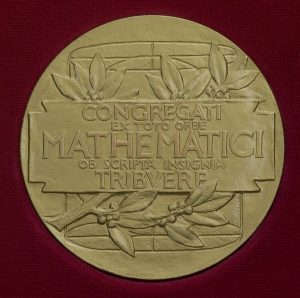 Hidden figures no more. That’s the future that Professor of Mathematics Ami Radunskaya hopes to see soon in the world of mathematics: more women—particularly more women of color—in the field.
Hidden figures no more. That’s the future that Professor of Mathematics Ami Radunskaya hopes to see soon in the world of mathematics: more women—particularly more women of color—in the field.
What’s Next For:
Revolutions?
Syria?
Mexico?
Japan?
The United States?
Earthquake Safety?
Climate Action?
California Water?
Climate Science?
Solar Energy?
California Fruit Farming?
Technology Investing?
Nanoscience?
Digital Storage?
Artificial Intelligence?
Cyber-Threats?
Social Media?
Space Exploration?
Science Museums?
The Sagehen?
Biodiversity?
The Blind?
Big Data?
Mental Illness?
Health Care Apps?
Maternity Care?
Etiquette?
Ballroom Dance?
Thrill Seekers?
Outdoor Recreation?
Funerals?
Writers?
Movies?
Manga?
Alt Rock?
Women in Mathematics?
“There’s been an increase of awareness about equity in mathematics thanks to the Hidden Figures movie, which came out almost two years ago,” says Radunskaya, who has seen the success of programs like Black Girls Code—part of a growing trend to get middle and elementary school-aged girls interested in math.
The first and last time a woman received the prestigious Fields Medal, the highest honor a mathematician can receive, was in 2014, when Maryam Mirzakhani won the coveted medal, often described as the “Nobel Prize for mathematics,” for her work in the field of geometry.
Although the Fields Medal is awarded to only a handful of mathematicians every four years, Radunskaya is hopeful that more women will be named winners in the near future.
Radunskaya, who is also the president of the Association for Women in Mathematics (AWM), adds that while more young women are majoring in math at the undergraduate level, more needs to be done to see women continue studying math at the graduate level and beyond. “It’s like a leaky pipe,” she says. “As you go up, the numbers of women faculty at large and prestigious research universities gets smaller and smaller. The gender equity needs to trickle up.”
So what’s needed exactly to see more women win the Fields Medal in the future? Radunskaya says, “It’s really about supporting women of color get into positions where they are visible who can then become role models for the future so that when we walk into a room at a math conference we’re not surprised to see all kinds of people: different genders, different races and different backgrounds.”
